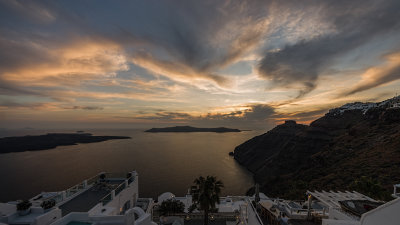Well, there is a wide range of views, although everyone seems to think the auto adjustment looks horrible. I’m going to play around some more and probably post a few more versions. This gives me a lot to think about.
BTW, this is atop Laurel Ridge in Pennsylvania, a mountain area that gets about 12 feet of snowfall per year and has four ski resorts.
Gerry, good point about the left and right sides having different temperatures. I’m not sure, though, do you mean that the warmth should be adjusted +10 in the right and +4 in the left, or do you mean that for the whole picture the warmth should be adjusted +4 and the tint +10?
Achieving white balance, by definition, is where the color of the light source itself is subtracted from the image, so the final image appears as though it was photographed under white light. So a subject that is objectively neutral (that is, it reflects all visible frequencies of light equally) is white balanced when it is also objectively neutral in the final image (that is, the red, green, and blue color values are all equal).
The easiest way to obtain a white balance is by using the white balance eyedropper and clicking on a neutral object, such as snow. Auto white balance is unable to do this because it doesn't know what objects are supposed to be neutral; it doesn't know that snow is white, and it doesn't know what snow looks like anyway.
However, this process only works really well under controlled lighting conditions. When shooting in full sunlight, you have a bright yellowish and hard light source, and the rest of the entire scene is illumined by a large blue softbox, so there will always be a color cast difference in highlights and shadows between yellow and blue. Yeah, it's totally ok that the sun will throw a yellowish light and that objects in the shade will look blue.
In *this* situation, all you need to do is use the Daylight white balance preset (assuming you are shooting raw). Or shoot JPEGs with the Daylight white balance. However, this Daylight is typically calibrated for mid-day in mid-summer, at mid-latitudes, so some adjustment may be needed.
What I would do is click the white balance eyedropper on snow that is directly lit by the sun, and then maybe adjust the color temperature slider a bit towards yellow or blue to taste, but only adjust it by a tiny amount. I would let my eyes rest a bit before evaluating the final color of the image.










